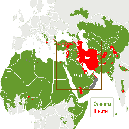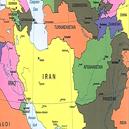Противостояние шиитов и суннитов в регионе Ближнего Востока имеет давнюю историю. В контексте событий «арабской весны» суннитско-шиитский конфликт стал нести угрозу не только региональной, но и международной безопасности. В последние годы в связи с геополитической конкуренцией Саудовской Аравии и Ирана к религиозному контексту суннитско-шиитского противостояния добавилась политическая составляющая. Гражданская война в Сирии, сложная внутриполитическая ситуация в Ливане, беспорядки в Йемене, Бахрейне, Ираке в той или иной мере является следствием противостояния между двумя течениями ислама на Ближнем Востоке.
THE SUNNI-SHIITE CONFRONTATION
THE STRUGGLE OF IRAN AND SAUDI ARABIA
FOR REGIONAL LEADERSHIP
The confrontation between Shiites and Sunnis in the Middle East region has a long history. However, the most extensive forms of the Sunni-Shiite conflict acquired in the context of the events of the "Arab spring" and began to pose a threat not only to regional security, but also to international security. In recent years, in connection with the geopolitical competition of regional players such as Saudi Arabia and Iran, a political component has been added to the religious context of the Sunni-Shiite confrontation. The civil war in Syria, the difficult political situation in Lebanon, the unrest in Yemen, Bahrain, Iraq, all this is in one way or another is the result of the confrontation between the two currents of Islam in the middle East.
 Ранний опыт государственного строительства большевиков и Конституция РСФСР 1918 года
Ранний опыт государственного строительства большевиков и Конституция РСФСР 1918 года
 7
7
 25332
|
Официальные извинения
25332
|
Официальные извинения
 972
972
 105061
|
Становление корпоративизма в современной России. Угрозы и возможности
105061
|
Становление корпоративизма в современной России. Угрозы и возможности
 239
239
 84616
84616



